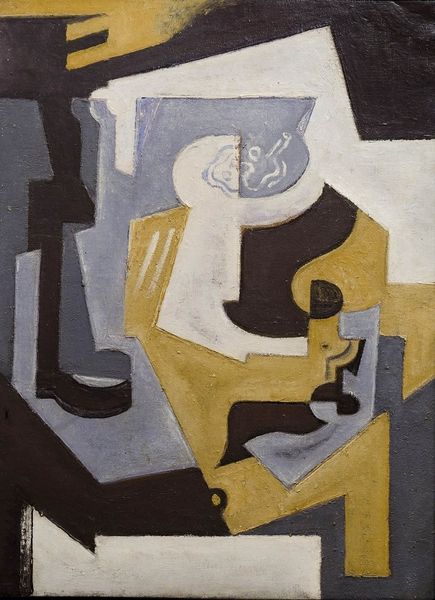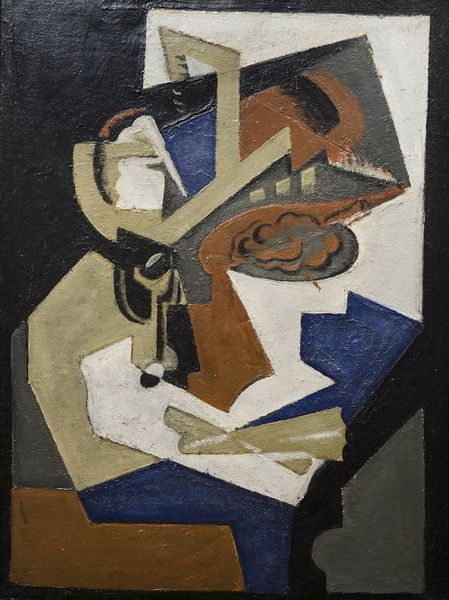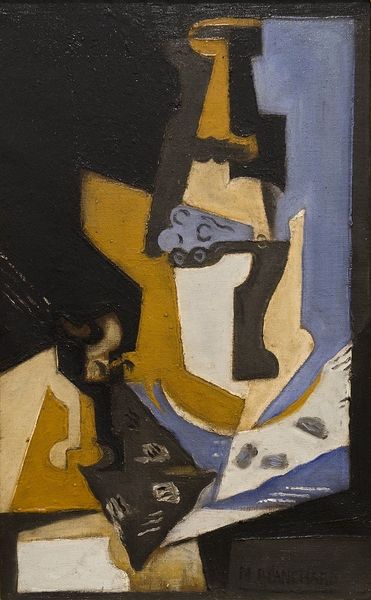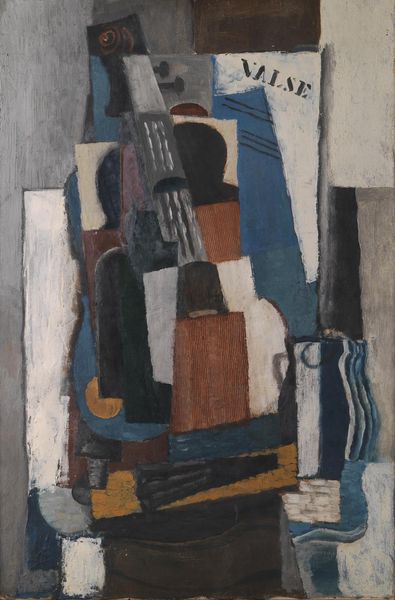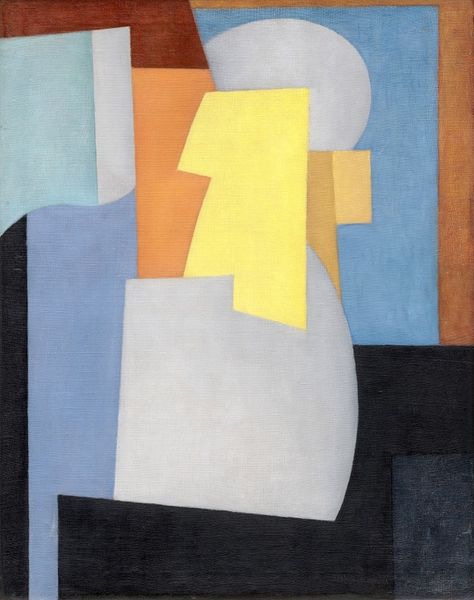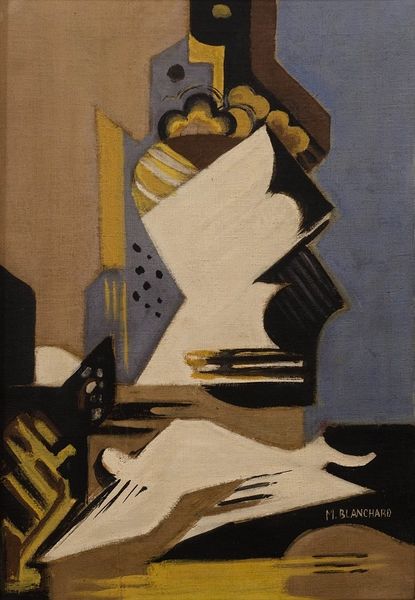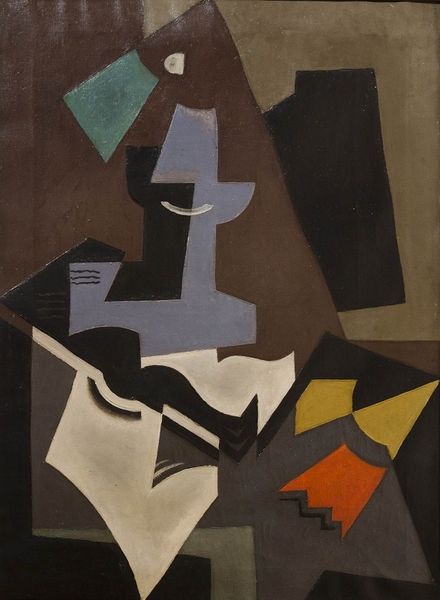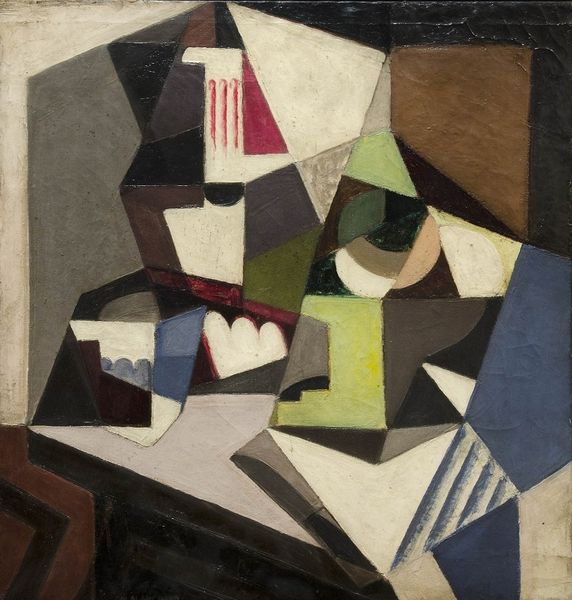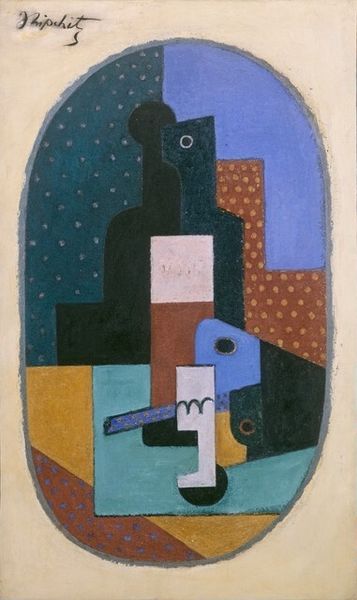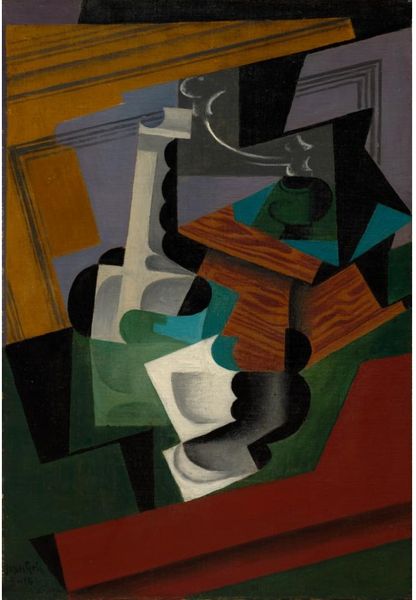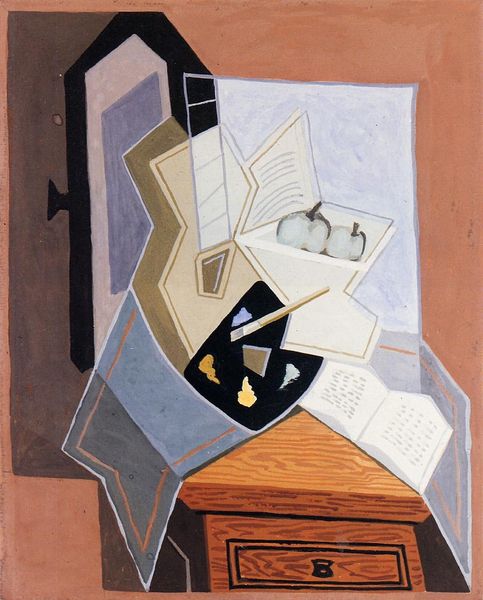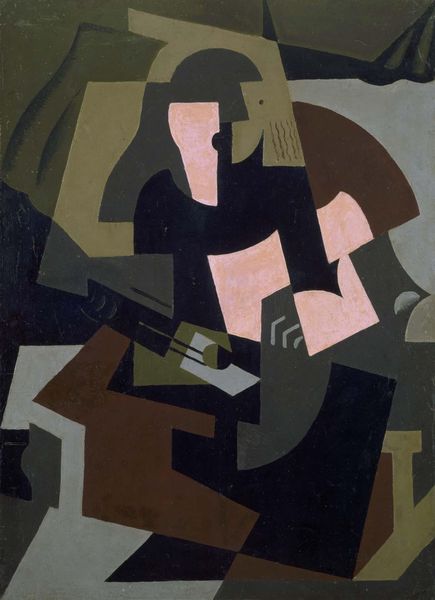
painting, oil-paint
#
cubism
#
painting
#
oil-paint
#
oil painting
#
geometric-abstraction
Copyright: Public Domain: Artvee
Editor: This is María Blanchard's "Nature Morte" from 1918, an oil painting displaying a striking cubist still life. I’m really drawn to its somber mood despite the vibrant yellows and blues; it feels quite complex. How do you interpret this work in the context of its time? Curator: It’s essential to see "Nature Morte" within the turbulent post-World War I period. Blanchard, working within the Cubist idiom, uses fragmented forms not merely as aesthetic play, but perhaps as a reflection of a fragmented society. What do you think the inclusion of a pipe suggests in this context? Editor: Perhaps a desire for comfort or escape in the face of that societal fragmentation? It seems almost… nostalgic, though filtered through this very modern lens. Curator: Precisely. Cubism, though revolutionary in form, was also embraced by some artists as a way to make sense of rapid industrial and social change. Note how the painting refuses a singular viewpoint; is this not also reflective of the conflicting narratives vying for dominance in the interwar years? Consider how galleries and patrons might receive work that departs from traditional forms while echoing current social tensions. Editor: That makes sense. It’s fascinating how the style itself can become part of the historical narrative, reflecting unease and searching for new perspectives. Curator: Indeed. And the subdued palette further hints at this complexity. Blanchard’s work makes us question how aesthetics and socio-political circumstances are inextricably linked. What did you learn about Cubism today? Editor: Definitely a newfound appreciation for the layers of meaning it can hold, far beyond just abstract shapes! I never looked at Cubism this way before!
Comments
No comments
Be the first to comment and join the conversation on the ultimate creative platform.
